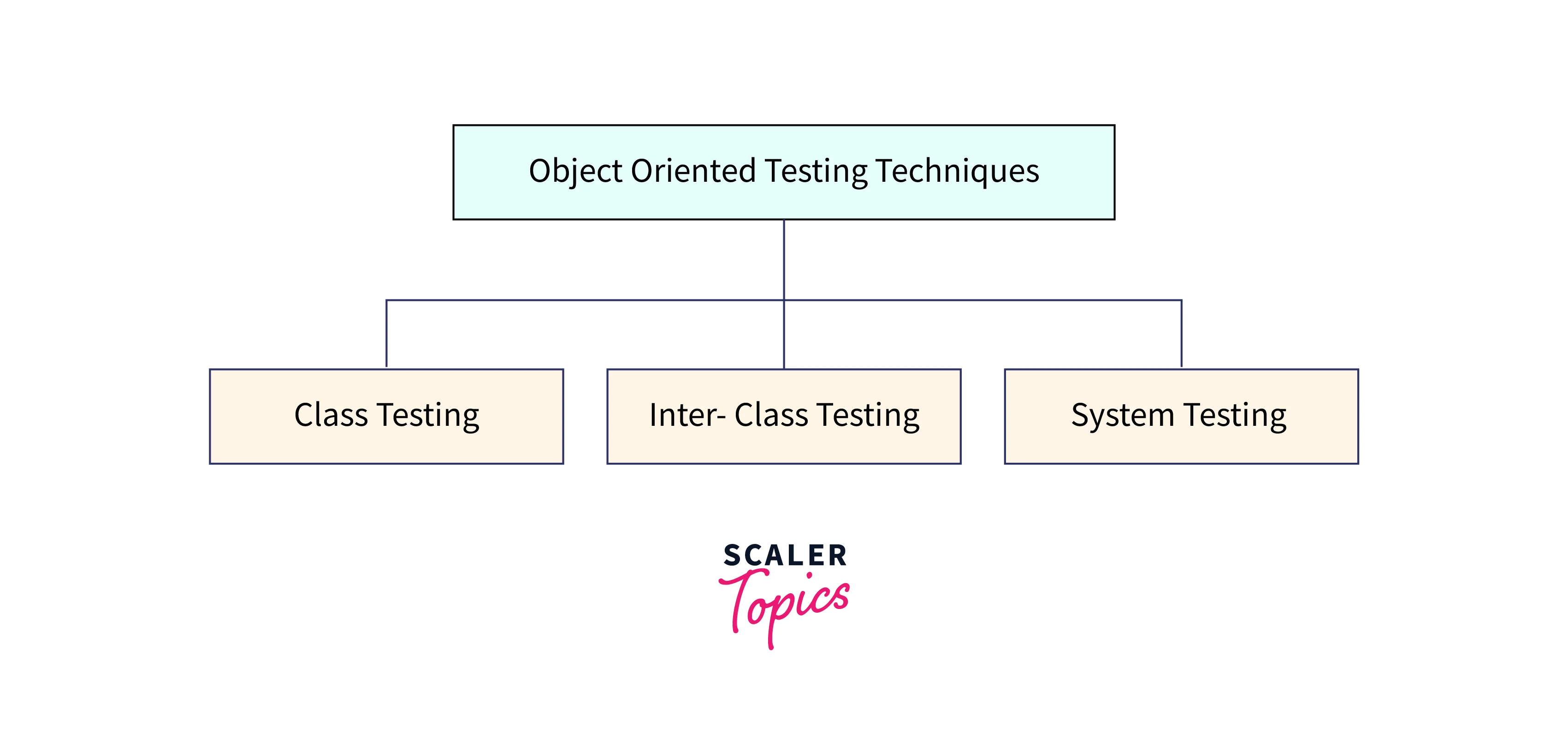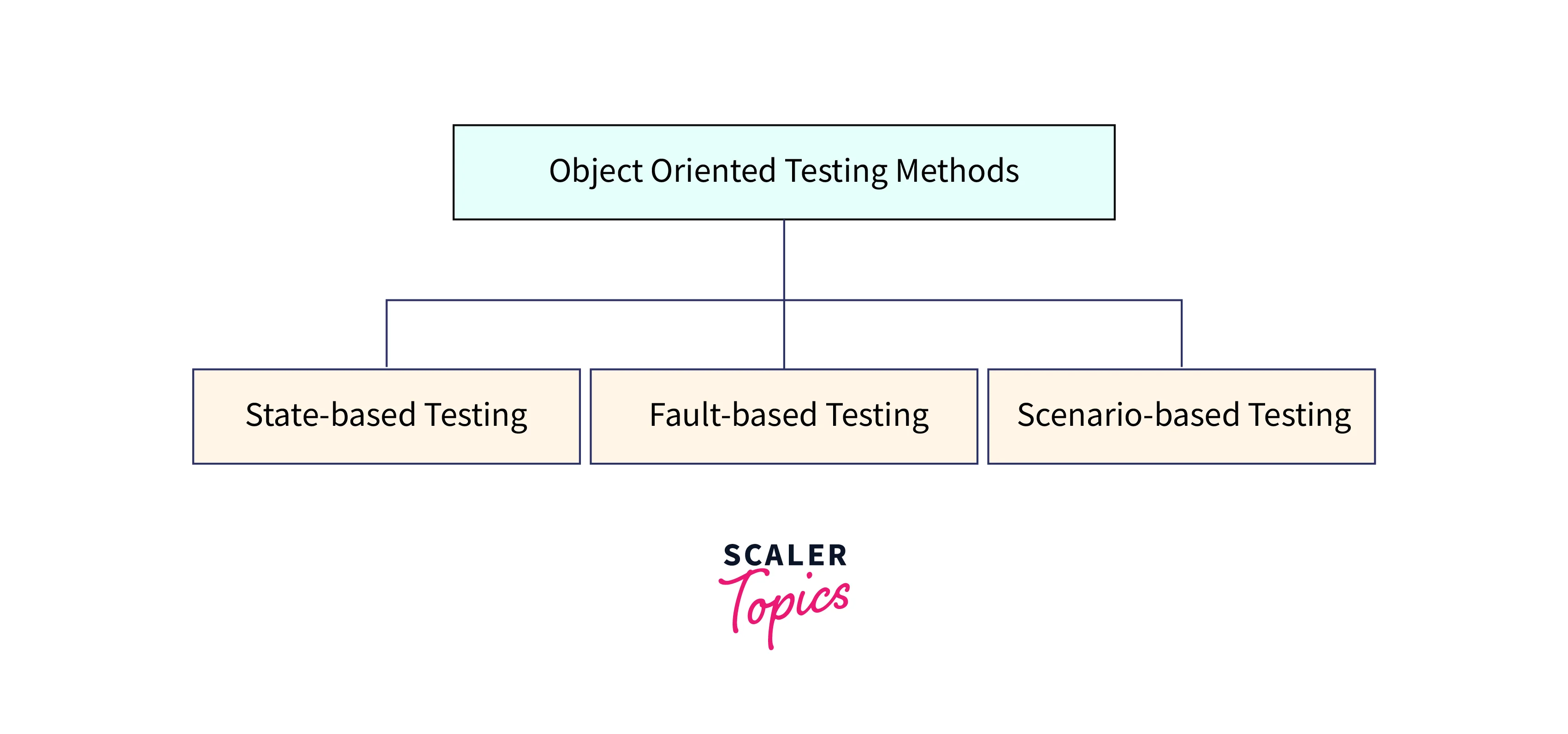Object-oriented Testing in Software Testing
Overview
Initially, we were following the traditional method of testing which consists of procedures operating on data. But now, we are following the object-oriented testing method that focuses on the objects that are instances of classes. This change from traditional to object-oriented made us reconsider old strategies and software testing methods. There are many advantages of using the OO paradigm including reliability, interoperability, reusability, and extendibility.
Introduction
Different Levels of Object-Oriented Testing in Software Testing

Object Oriented testing can be performed at different levels to detect the issues. At the algorithmic level, a single module of every class should be tested. As discussed earlier, testing of classes is the main concern of the Object Oriented program. Every class gets tested as an individual entity at the class level. Generally, programmers who are creating the classes are involved in testing. Test cases for Object-Oriented Testing in Software Testing can be constructed based on the requirement specifications, programming language, and models.
Once class-level testing is done, Cluster level testing will be performed. Cluster-level testing is the integration of individual classes. The main purpose of doing integration testing is to verify the interconnection between classes and how well they perform interclass interactions. Thus, Cluster level testing can be viewed as integration testing of classes.
Once Cluster level testing is performed, system-level testing begins. At this level, integration between clusters can be taken care of. Also, at each level regression testing is a must after every new release.
Developing Test Cases in Object-oriented Testing
How to develop test cases in Object Oriented Testing in Software Testing?
Conventional methods can be used to design test cases in OO testing. However, these test cases can be redeveloped with some special features so that they can use for object-oriented environments. The following points should be considered while creating test cases for object-oriented environments.
- Which class is going to be tested should be mentioned properly within the test cases.
- What is the purpose of using particular test cases?
- What external pre-condition needs to be conducted while performing the test case?
- All the states should be specified for testing.
Object-Oriented Testing Levels /Techniques
Object Oriented Testing in Software Testing techniques are:

Fault-based testing: The main focus of fault-based testing is based on consumer specifications or code or both. Test cases are created in a way to identify all possible faults and flush them all. This technique finds all the defects that include incorrect specification and interface errors. In the traditional testing model, these types of errors can be detected through functional testing. While Object Oriented Testing in Software Testing will require scenario-based testing.
Scenario-based testing: This testing technique is useful to detect issues due to wrong specifications and improper interaction among the classes. Incorrect interactions lead to incorrect output which can cause the malfunctioning of some segments sometimes. Scenario-based testing focuses on how the end user will perform the task in a specific environment. These scenarios are more detailed and created concerning the user’s requirements rather than product-specific.
Scenario-based testing combines all the classes included in created use cases and tests them all. The main purpose of this is to verify that all the methods of classes get tested at least once while performing Object Oriented Testing in Software Testing. However, it is difficult to test each object in a large system. Thus, the top-down or bottom-up integration approach gets followed.
The scenario-based testing technique has been considered the most effective method of the OO program.
Class Testing based on the method testing: This Object Oriented Testing in Software Testing can be considered the most simple and common approach. Each method of the class performs a proper cohesive function so that methods can be involved once during the testing.
To minimize the variety of operations, random sequence testing gets performed. It is less time-consuming and effective as well. Partition Testing: Inputs and outputs of the category get divided to minimize the number of test cases.
Challenges in Testing Object-oriented Programs
Issues with Object Oriented Testing in Software Testing
- Dynamic testing of classes is not possible in an OO program because it allows instances of classes to be tested. Therefore, additional testing techniques are required to test the interconnection between classes.
- In object-oriented programs, control flow can be monitored with message passing between objects. It changes from one object to another with intercommunication. To test these sequential flows different types of testing approaches will be required.
- Inheritance of objects is an important part of the OO program. In a larger system, it is difficult to test the subclass and detect errors in one class.
- The state associated with a particular object influences the methods, execution, and communication between classes. Therefore, the state plays a vital role in object-oriented testing in software testing.
Conclusion
- To sum up, object-oriented testing in software testing is an approach that focuses on testing individual classes in an object-oriented program.
- It involves testing at different levels, including algorithmic, class, cluster, and system-level testing.
- Developing test cases for object-oriented environments requires special considerations and specifying all the states for testing.
